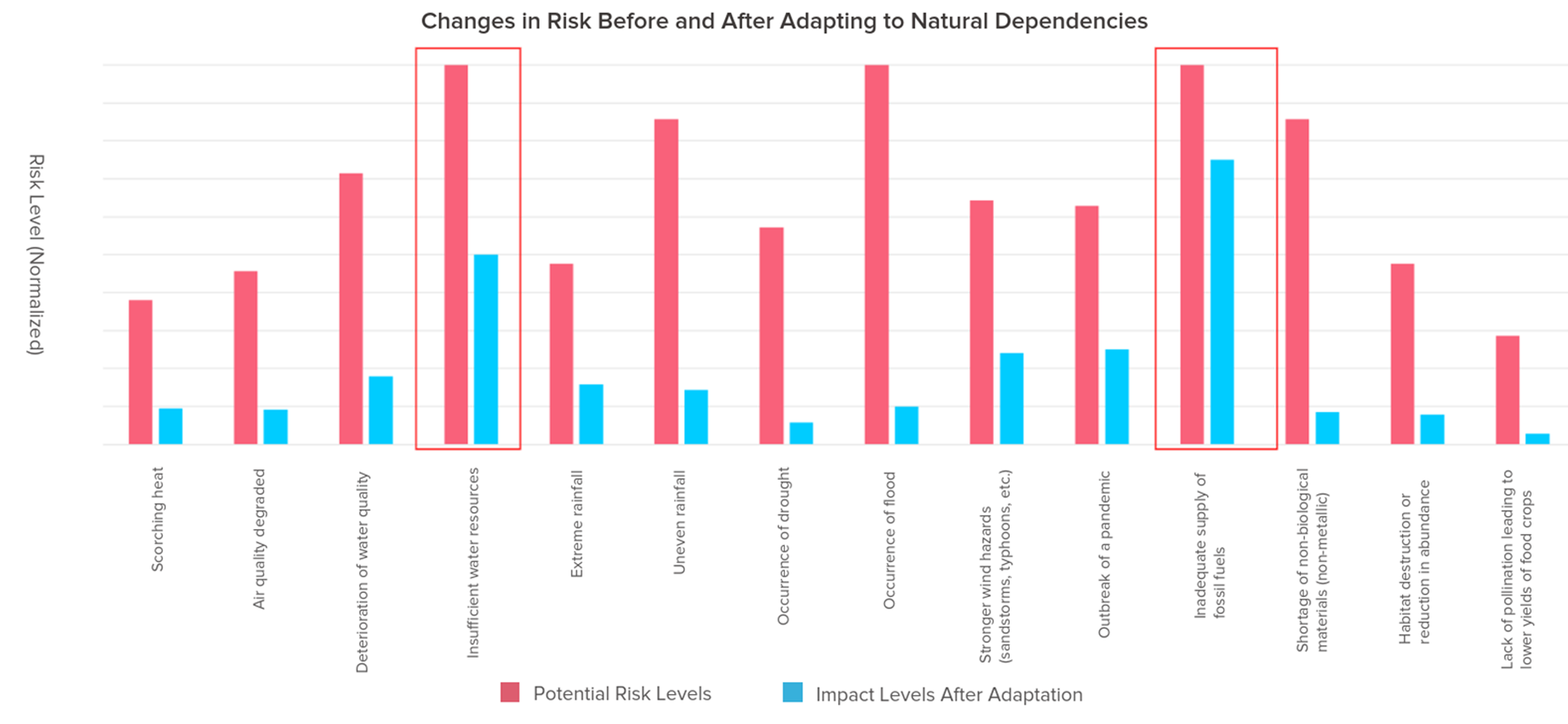Sustainable Governance
永續治理
CTCI Leads the Way: Advancing Toward a Nature-Positive Future with TNFD
Amid the wave of global corporate sustainable development, the Taskforce on Nature-related Financial Disclosures (TNFD) has become a growing focus for both businesses and investors. As the loss of biodiversity and depletion of natural capital increasingly impact the economy, businesses must not only address climate risks but also incorporate nature risks into their decision-making processes.
As an early adopter in TNFD within the engineering sector, CTCI began piloting the framework at the end of 2022, formally adopting it in 2023. In addition to disclosing related information in its sustainability report, CTCI published its first TCNFD Report in 2024, earning a place on TNFD’s list of illustrative examples of reporting the TNFD. This article outlines the background and framework of TNFD, and how CTCI leverages it to enhance sustainability management.
The Origin and Purpose of TNFD
TNFD was launched in 2021 by a coalition of international organizations, business leaders, and financial institutions. It aims to provide a global framework to help businesses and financial institutions identify, assess, manage, and disclose nature-related risks and opportunities. Drawing from the success of the Task Force on Climate-related Financial Disclosures (TCFD), TNFD expands the focus to include ecosystems and biodiversity.
According to the World Economic Forum, over half of the global GDP is dependent on natural capital, meaning that ecological changes can significantly affect business operations. TNFD guides companies through risk assessments and disclosures, allowing investors and stakeholders to gain transparent insight into a business’s nature-related sustainability performance.
Understanding the TNFD Framework
TNFD adopts the LEAP approach (Locate, Evaluate, Assess, Prepare) to help businesses identify and respond to nature-related risks and opportunities:
1.Locate: Identify key nature-related issues within business activities and value chains.
2.Evaluate: Analyze business dependencies on natural capital and the impacts involved.
3.Assess: Measure the financial implications of nature-related risks and opportunities.
4.Prepare: Integrate nature-related risks into decision-making and disclosures.
The TNFD’s recommended disclosures closely aligns with TCFD and includes four pillars: Governance, Strategy, Risk & Impact Management, and Metrics & Targets, enabling businesses to integrate nature risk management into their ESG strategies.
How CTCI Applies the TNFD Framework
As Taiwan’s leading EPC (engineering, procurement, and construction) group and one of the top 100 globally, CTCI is committed to sustainability and environmental stewardship through global standards. As one of the first companies in its industry to adopt TNFD, CTCI has set a benchmark both in Taiwan and globally with a comprehensive nature risk management strategy.
CTCI applies the TNFD framework through the following strategies:
1.Identifying Nature-related Risks and Opportunities: Using the LEAP approach, CTCI assesses risks and opportunities across operational sites and EPC projects to determine risks and mitigation strategies.
2.Disclosure of Risks and Response Strategies: TNFD-related information is included in CTCI’s sustainability report and TCNFD report, enhancing transparency for stakeholders.
3.Leveraging Core Business Influence: Through green engineering practices, such as eco-friendly design, energy-saving and carbon-reduction technologies, and circular economy models, CTCI reduces its environmental impact.
4.Collaborating with Value Chain Partners: CTCI works with suppliers to manage environmental risks across the supply chain, ensuring upstream and downstream partners align with nature-positive goals.
CTCI’s Nature-related Risk and Opportunity Management
To properly assess nature-related risks, CTCI established its “Group Climate and Nature Risk Management Regulations” and corresponding implementation procedures. The company’s sustainability and net-zero task force collaborates across departments to identify and mitigate nature-related risks while exploring associated opportunities.

An internal assessment identified “water scarcity” and “fossil fuel depletion” as two key nature-related risks that remain significant despite existing mitigation measures. As a result, CTCI has taken the following actions:
•Internal Operations: Promote water-saving awareness and install water-efficient systems.
•Business Strategy: Expand into markets related to water resource infrastructure, such as water reclamation and seawater desalination plants.
•Technology and Innovation: Adopt high-efficiency technologies and products to reduce energy consumption and costs, while expanding into renewable energy and clean technology markets, such as green/blue hydrogen, blue ammonia, and energy storage solutions.
Actions to Preserve Biodiversity
CTCI has committed to biodiversity and zero deforestation, aiming to achieve No Net Loss (NNL) by 2030 and a Net Positive Impact (NPI) by 2050. The company is also a signatory to the Business for Nature coalition’s Call to Action, demonstrating its dedication to protecting ecosystems and biodiversity through concrete actions.
Throughout the entire life cycle of EPC projects, CTCI incorporates biodiversity protection strategies. These include:
•Engineering Phase: Proposing ecological conservation plans as part of environmental impact assessments.
•Construction Phase: Minimizing environmental impact through avoidance, reduction, and mitigation strategies.
In addition, CTCI collaborates with clients, academic institutions, and NGOs on ecological research and conservation projects. Examples include creating habitats for little terns, purple crow butterfly tagging studies, protection of small-leaved barringtonia, and surveys of birds, insects, and plants in Taipei City, as well as conservation efforts in Guandu Wetland.

Conclusion
As businesses worldwide increase their focus on nature-related risks, TNFD has become a crucial guide for achieving nature-positive sustainability. For CTCI, adopting the TNFD framework not only enhances risk management but also strengthens competitiveness and brand value. As an early adopter and leader in this field, CTCI continues to implement nature risk management strategies and guide the industry toward sustainable development. Moving forward, CTCI will keep a close watch on TNFD’s developments and continue offering green engineering services to safeguard the Earth’s sustainability.
Download the 2023 TCNFD Report






